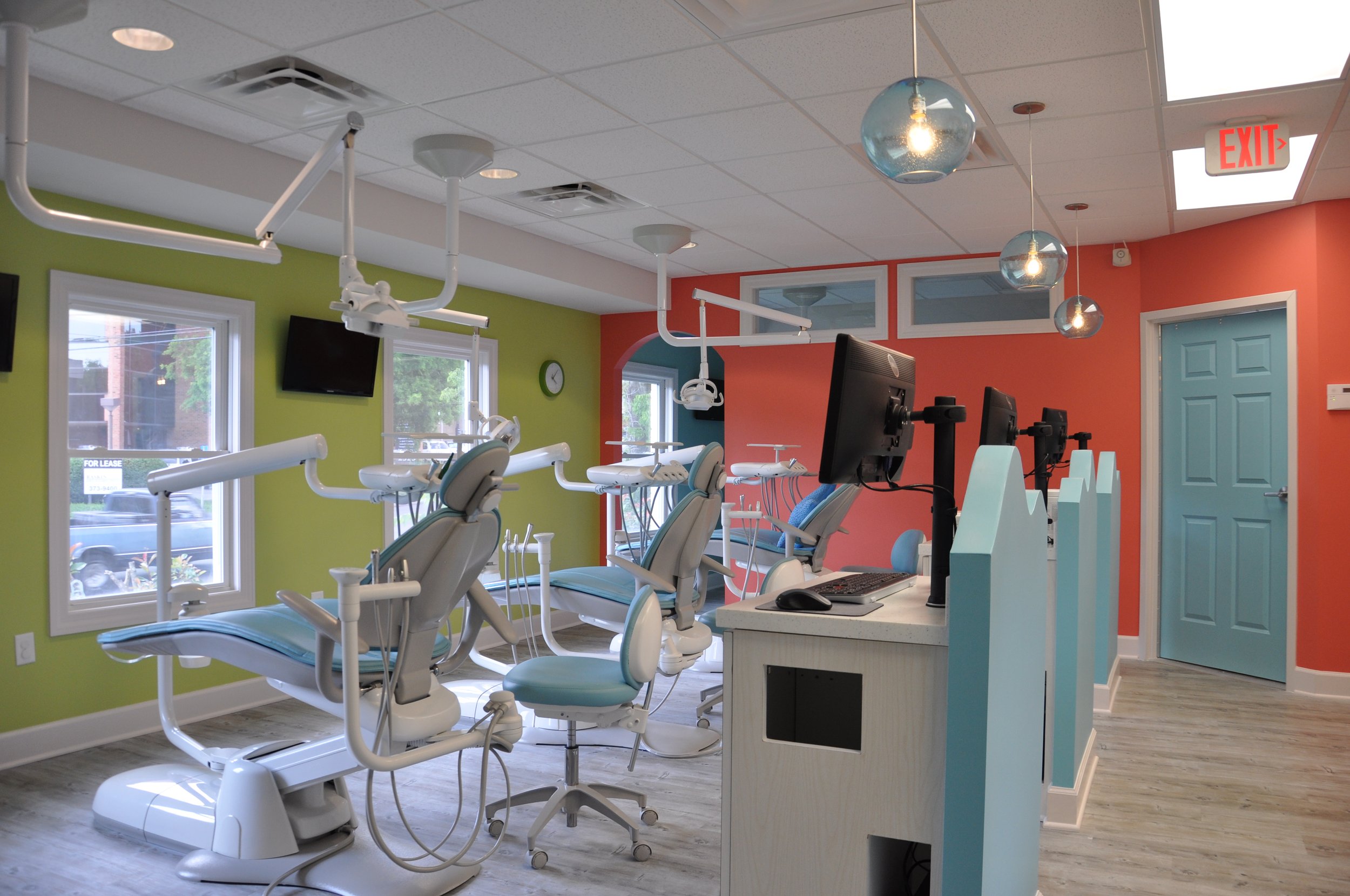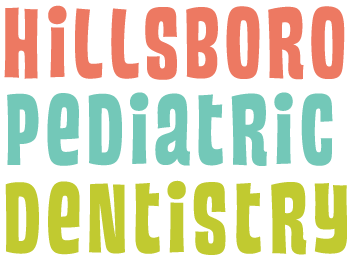
First Visit
Check up/Hygiene Appointments
Our check up appointments encompass more than “just a cleaning.” We view each check up as an opportunity to educate your family and provide your child the tools to remain cavity free.
Although check up appointments are a critical component of your child’s dental care, we know that your child’s home care program and habits will more likely influence his or her ability to stay cavity-free. Therefore, we place a significant emphasis on education and help identify and eliminate potentially harmful habits.
Preventive Dentistry
A twice a year professional dental cleaning and fluoride treatment are all part of your child’s prevention program.The fluoride varnish we offer during a preventive visit that is shown to be the most effective in remineralizing teeth and preventing tooth decay. However, there is much more. At our office, we discuss nutrition as a very important aspect of dental caries prevention. Sodas and sticky snacks are a common culprit in dental disease. Frequency of snacking is also an issue. Therefore a discussion with parents about a child’s eating habits is essential to our visit.
At the appropriate age, we can apply sealants to protect your child from tooth decay. Our sealants are a BPA-free resin that coats the pits and grooves of your child’s permanent molars, making it less likely for food and bacteria to hang out in those areas and begin the cavity-making process.
If your child is involved in a contact sport, a customized mouthguard can be fabricated to prevent sports injuries to the face and teeth. These mouthguards fit better than store-bought ones, and therefore are more comfortable for children to wear. The more comfortable a mouthguard, the more likely your child will wear it to protect his or her teeth, head, and neck from injury.
As pediatric dentists, we can also provide early diagnosis and care of orthodontic and crowding problems. We are uniquely trained to spot developmental problems early and can sometimes offer a plan to help align teeth with an appliance or retainer that works with your child’s growth spurts. This is referred to as early interceptive orthodontics and it sometimes can prevent the need for full orthodontics (braces) completely.
Behavior Management
Pediatric dentists have a special place in their hearts for children. Working with children everyday, we have learned how to modify our language to help ease them into conversation and to increase their comfort. Some of the silly words we use to describe dental tools and procedures allow children to help us teach them the importance of taking care of their teeth and just how fun that can be! Our special vocabulary is proven to allay the fears of both parents and children alike!
The following are techniques that we will use to manage a child’s behavior: modeling, communicative management, nonverbal communication, tell-show-do, positive reinforcement, parental absence/presence and distraction. For example, sometimes showing a child how the “tooth polisher” or “Mr. Thirsty” will feel on their finger may be all that is needed to allow them to trust us to clean their teeth!
Restorative and Cosmetic Dentistry
As we have mentioned earlier, we focus on using the highest quality restorative material as well as the most up to date techniques. All of our fillings are tooth-colored. We are a mercury-free office. Dr. Mirna also insures that the composite material and sealant material she uses on children is BPA-free. Dr. Mirna prides herself on being an extremely conservative pediatric dentist.
Nitrous Oxide Sedation
Some children are given nitrous oxide/oxygen, or what is commonly called “laughing gas” to relax them for the treatment. Nitrous oxide/oxygen is a blend of two gases, oxygen and nitrous oxide. The blend is given through a small breathing mask placed over the child’s nose. The gas merely relaxes the child. It does not put the child to sleep. While inhaling nitrous oxide/oxygen, your child remains fully conscious and keeps all natural reflexes.
The American Academy of Pediatric Dentistry recognizes this technique as safe and effective for treating children’s dental needs. The gas is mild, non-addictive, easily taken, and with normal breathing, quickly eliminated from the body.
Conscious Sedation
Most kids do quite well without any kind of extra medication to accomplish treatment. However, sometimes medications are needed to help kids to be comfortable and cooperate to accomplish extensive treatment. We administer these medications orally (by mouth). Sedative medications cause most children to become relaxed and drowsy. Unlike general anesthesia, sedation is not intended to make a patient unconscious or unresponsive.
Sedation can be used safely and effectively when administered by a pediatric dentist who follows the sedation guidelines of the American Academy of Pediatric Dentistry. We will discuss sedation options and patient monitoring for the safety and comfort of your child.
Before a visit in which your child is to receive oral sedation, you should receive instructions about eating and drinking, what to expect and what to watch for after treatment. You will need to stay for a short time after dental treatment has been completed so your child can be observed for full recovery and possible complications. You may need to carry your child home after sedation. Your child will be closely monitored while he or she is sedated.
Hospital Dentistry
General anesthesia may be indicated for children with extensive dental needs who are extremely uncooperative, fearful or anxious or for the very young who do not understand how to cope in a dental setting.
Although there is some risk associated with general anesthesia, it can be used safely and effectively when administered by an appropriately-trained individual in an appropriately-equipped facility. Precautions are taken to protect your child during general anesthesia; personnel who are trained to manage complications will monitor your child closely. We will discuss the benefits and risks of general anesthesia and why it is recommended for your child.
Dr. Mirna is able to provide comprehensive dental treatment with the use of general anesthesia in a hospital setting for children with severe dental problems as well as children with special needs. She is currently one of a few pediatric dentists with privileges to treat children at Vanderbilt Children’s Hospital in Nashville.
The main goal of our office is Prevention, Prevention, Prevention! Did you know that the American Academy of Pediatric Dentistry recommends children begin visiting a dentist regularly for check-ups beginning at age 12 months? The reason for this recommendation is that the first dental visit is mainly an educational one. We discuss your infants feeding habits, your hygiene practices, and make individualized recommendations to help prevent dental disease from ever occurring. The earlier we have a chance to sit down and discuss diet and hygiene habits together, the better we can be at preventing dental disease.
When cavities do occur, we focus on using the highest quality restorative material as well as the most up to date techniques. Dr. Mirna has never placed an amalgam or mercury filling in a child’s mouth, and never will. All of our fillings are tooth-colored, and Dr. Mirna also insures that the composite material and sealant material she uses on children is BPA-free.
Our radiographs are digital, reducing the radiation a child receives from these diagnostic images by 80% from traditional x-rays we received as children.


